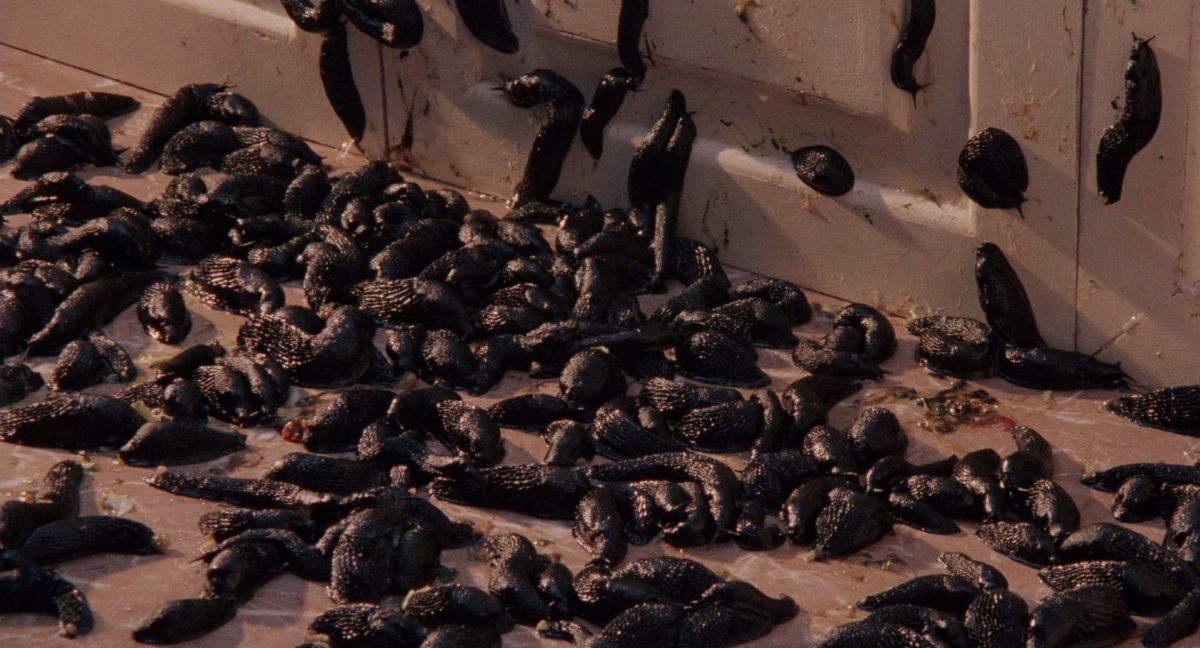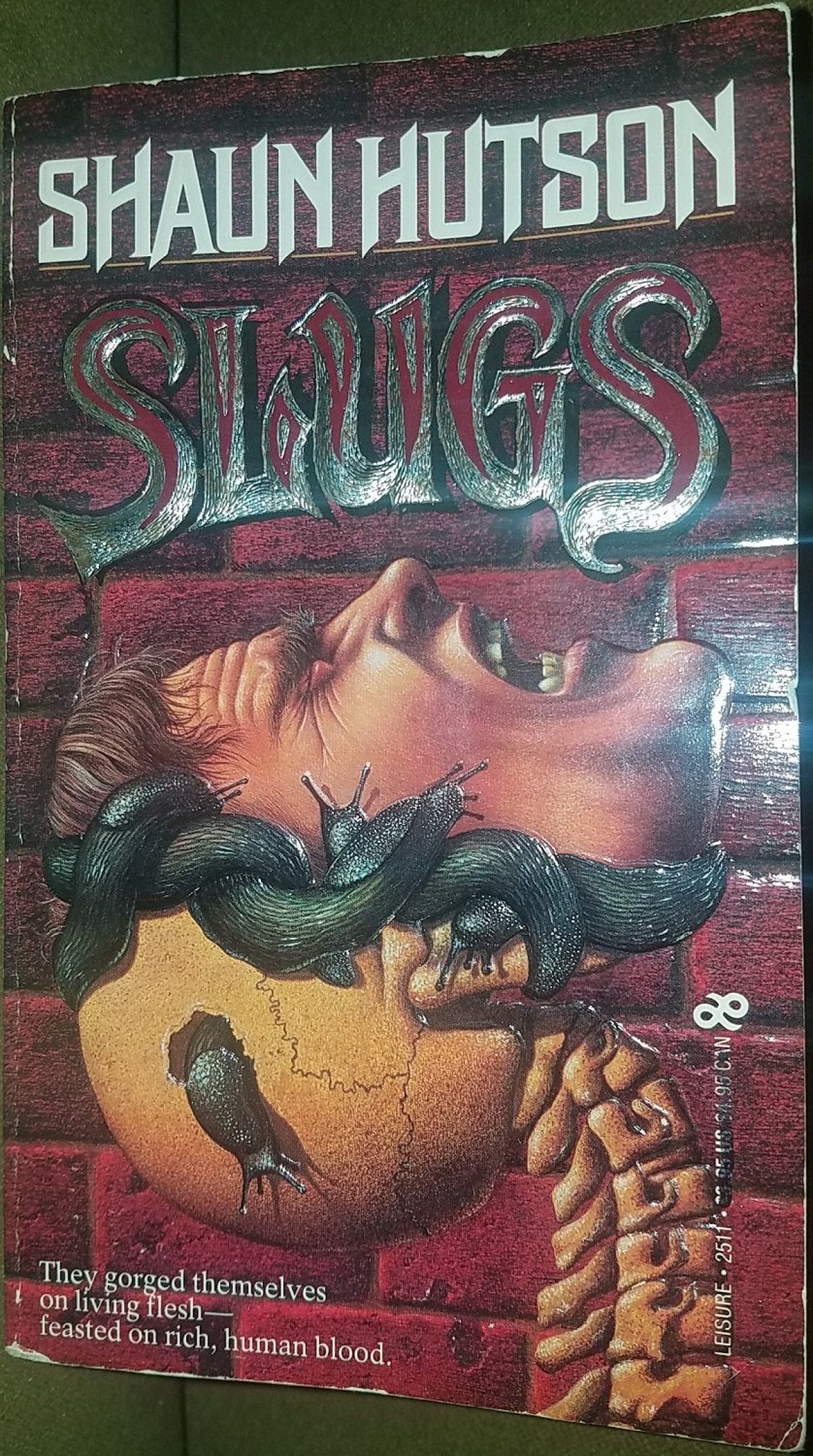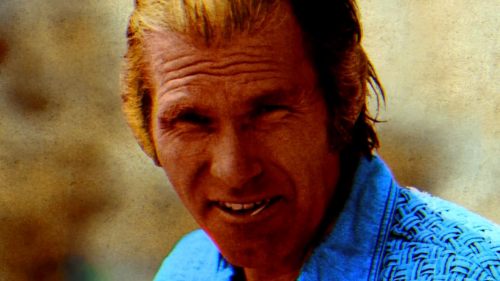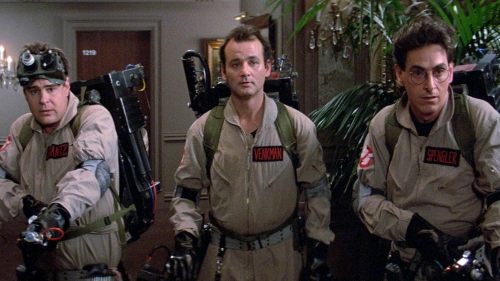Collins’ Crypt: The Best Adaptation Ever Is…SLUGS?
Thanks to that one TV show, the old argument about how to adapt a book into a movie or show is going around again, and as always I roll my eyes at the people who believe an adaptation should be translated word for word, as I don't think anything could be less interesting. Disagreeing with this or that choice the screenwriters opted to make is natural, of course, but that's also why I prefer to see a movie/show before reading the book - the filmed version will naturally be scaled down, and we won't be privy to the characters' inner thoughts. So it just makes more sense to me to experience it in a form where I won't be aware that anything is "missing", or if someone makes a different choice than their novel counterpart as I won't know them as well, anyway. I can always go back and read it after and get the fuller picture, and usually walk away enjoying both things despite whatever changed along the way.
However, in the case of Slugs, the book and the movie almost feel like they've been body swapped. The filmed version of Shaun Hutson's 1982 novel is fairly faithful, with the biggest change probably being the change of location - the book was set in England, while the movie takes place in upstate New York. But hilariously, the movie actually adds some scenes that tie its characters together and/or gives us a chance to meet them before their ultimate demise at the tentacles of the millions of disgusting gastropods that lay siege to the little town, making it feel more fleshed out as a result. The original novel is the one that actually feels stripped down in comparison - Hutson will occasionally cut to a new character, describe them, give them some brief thing to do, and then kill them, without them ever interacting with any other characters (and on occasion never even get mentioned again).
In the early pages this works well, because you don't know who the heroes are yet, but as the book goes on it feels a bit like the author was just worried about the reader getting bored with the protagonist (a health inspector named Mike Brady in both) investigating the deaths and putting the slimy pieces together before setting about trying to stop them before they devour the entire town. Some of these vignettes are downright horrifying (one, involving a little boy watching his pet rabbit get ravaged by the things, legitimately left me unsettled), but many of them could be removed without it affecting anything beyond the page count. Director JP Simon (yes, of Pieces fame) clearly agreed - that one and a few others are dropped, and I doubt anyone on the planet would say the movie lacked sufficient carnage unless they read the book.

In the place of those death scenes he opted to strengthen the others by letting those victims spend some time with the other characters first. For example, both stories have a character named David Watson, a businessman who is set to close a big deal the day after he eats a salad that unfortunately had one of the slugs in it. At first he just gets a stomach ache, but then the pains start traveling north into his head, and during his lunch meeting he gets a nosebleed, followed by his head literally exploding with the things (think Little Buddy from Halloween III), which I assume is very scientifically accurate. In the book we get more time with him than the other victims, but he's still very disconnected from anything else in the story - he is introduced halfway through and takes center stage for 40 pages until his death. His on-screen counterpart, on the other hand, is shown to be pals with Brady, and we cut back to him once or twice more before his death. Also, rather than selling computers as he does in the novel, here he's closing a deal with the company that spread the pesticides that led to the slugs' mutation in the first place.
Similarly, in the novel Hutson randomly cuts to a girl who has invited her boyfriend over while her parents are out, and the two of them proceed to have sex in her parents' bed only to be interrupted by the slugs, who have completely covered the floor of the bedroom and eat them alive (though the boy ends up crashing through the window to his death after being bitten a bunch). Their scene is presented here, albeit less graphically (Hutson's sex scenes are quite detailed, and the movie thankfully skips the part where one slug burrows into the woman's... well, use your imagination)(ed. note - Ear??), but Ron Gantman's screenplay introduces these characters earlier, commenting on an earlier death with some other teens. Those other youths show up later, having a party in the woods right around the area that our heroes are entering with a bomb that will wipe out the slugs at their source - the book had no other teens of note, so as with the Watson character it tries to flesh out the ensemble while also giving these folks more purpose in the overall story (plus they give the movie a few laughs thanks to their awkward dialogue, likely a result of the Spanish/American co-production).
We can also thank Simon/Gantman for one of the movie's most memorable moments: the greenhouse explosion! In both versions, the slugs have infested a middle-aged man's greenhouse, and one gets inside his work glove and proceeds to start eating his hand. Unable to remove the glove, he uses some shears to cut his hand off before he loses his whole arm, and the commotion finally alerts his wife (inside the main house) who runs in and sees the ghastly sight without really knowing what the hell is going on. In the book the man passes out and the wife calls an ambulance, and that's that - if they're ever mentioned again, and it's kind of anticlimactic. The movie gives them a better sendoff: as he was thrashing around trying to get the glove off, he knocked over some chemicals and also tore some kind of wiring loose, which causes an explosion a few seconds after the wife runs in, killing them both.

It's a hilarious finale to the sequence, and when I read the book after seeing the movie I was kind of blown away that Hutson let them off so much easier. Rumor has it that Matthew Holness' amazing Garth Marenghi character (if you haven't seen Darkplace, stop reading my nonsense at once and go watch it) is partially based on Hutson, and while Slugs is the only one of his novels I've read, I feel it's enough to be comfortable believing that to be true. Between the lurid sex and rampant, largely out of nowhere death scenes it's clear he's not particularly interested in more psychological or even suspense-driven horror, opting to go for the spectacle whenever possible, so I'm fairly stunned that one of the movie's most ridiculous and somewhat mean-spirited moments was a change from his more subdued version. The film's other deaths are more or less in line with the way they happened in the novel, and are sufficiently gory/disgusting - the director of Pieces wouldn't dare let his fans down in that department.
But while the movie improves on some things like that (the best line, "You don't have the authority to declare Happy Birthday!", is also unique to the film, for the record), it drops the ball in a few other areas. For starters, the music by Tim Souster is perhaps fine in terms of its composition, but more often than not it in no way fits the film. Some cues sound like they belong in a 1970's cop show, while others will probably have you thinking they were written for a "very special episode" of your favorite old sitcom. His more traditional horror themes are fine, but they also sound a lot like Harry Manfredini's Friday the 13th stuff at times (which itself was already ripped off from other composers), so you might miss the "silence" that the book provides. Also, the slug FX aren't always that great, and it's made worse in the lovely transfer on Arrow's Blu-ray - you can clearly see that the "swarms" are actually sections of black tubing/wiring glued to a panel, with only some squishy sound effects to tell us that they're supposed to be moving. Hutson's descriptions are disgusting more often than not, but in the movie the sound and the actors have to do all of the heavy lifting to make them feel threatening.
Hutson wrote a sequel called Breeding Ground, but as of yet there hasn't been an adaptation of it (or any of his other novels, far as I know). After thirty years, I think we can safely assume there never will be, not without a new adaptation of Slugs, anyway. But there really isn't much of a need for one; the FX might be dodgy at times but any new version would likely stoop to using CGI, which would be far worse. And there couldn't be much of a "we want to be more faithful" defense - beyond the location swap (which is of no consequence anyway) Simon and Gantman kept it incredibly intact, while actually strengthening the ties between characters and raising the stakes a bit for the finale. The episodic nature of the book would make for a jarring viewing if translated word for word, so Simon and his crew should be commended for doing their job: adapting the story for a different medium while retaining its tone and core storyline. In that regard, and speaking relatively of course, Slugs might be one of the most satisfying adaptations ever made. I guess I'll find out in the comments if some OG reader calls the filmmakers idiots for crimes like "letting two of the main characters meet earlier" or "blowing up the idiot who cut his hand off".



